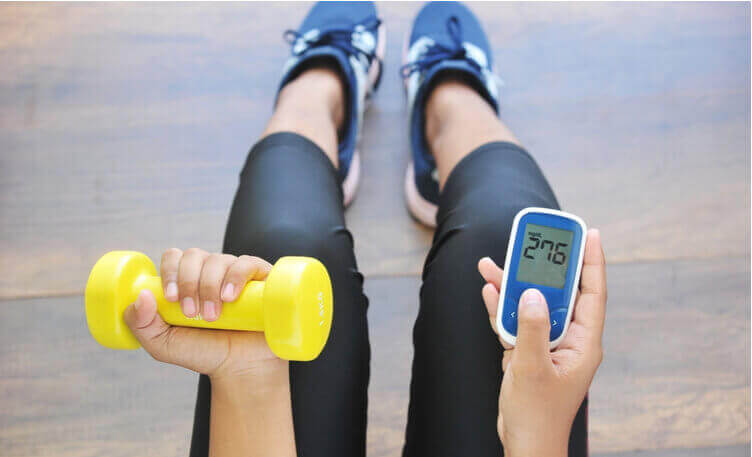If you have diabetes, exercise has a lot of advantages. It not only lowers your stress levels, but it may help lower your blood sugar levels and minimise your insulin needs.
The National Institutes of Health (NIH) advises that persons with diabetes engage in 150 minutes of aerobic activity each week. According to the American Diabetes Association, you should only skip two days of aerobic activity in a row.
Sue Cotey, RN, CDCES, and Andrea Harris, RN, CDCES, diabetes specialists, told us about some of the greatest workouts for diabetics. Here are their suggestions for how much exercise is appropriate for you, as well as some of the best methods to obtain it.
5 exercises for people with diabetes
Cotey recommends making a practise of completing the following exercises on a regular basis. They’ll provide you with the most benefits to assist you control your diabetes and are very simple to include into your daily routine.
- Walking : Walking is the most common activity and is highly advised for individuals with diabetes since it can be done virtually everywhere. Increasing your physical activity by 30 minutes of brisk walking five times a week is a terrific way to start. You may also divide the 30 minutes into three 10-minute periods throughout the day.
- Tai Chi : Slow, smooth body motions are used in this Chinese style of exercise to calm the mind and body. According to studies, people who participate in tai chi classes had better blood sugar management. They also claim to have more vigour, energy, and mental well-being.
- Yoga : Yoga is an ancient type of exercise that uses flowing movements to increase flexibility, strength, and balance. It is beneficial to patients who suffer from a number of chronic illnesses, including diabetes. It reduces stress and enhances nerve function, resulting in improved mental health and wellness. Yoga, according to the American Diabetes Association, may help to lower blood glucose levels by increasing muscle mass.
- Dancing : Dancing is beneficial to your health in more ways than one. The mental effort required to recall dance steps and sequences really increases memory and brain capacity. It’s a fun and engaging method for diabetics to enhance physical activity, lose weight, improve flexibility, drop blood sugar, and reduce stress. Many individuals can dance thanks to chair dancing, which involves the use of a chair to help persons with restricted physical skills. A 150-pound adult may burn up to 150 calories in 30 minutes.
- Swimming : Swimming stretches and relaxes your muscles while putting little strain on your joints, making it ideal for diabetics. Studies suggest that it improves cholesterol levels, burns calories, and reduces stress levels in those who have diabetes or are at risk of developing diabetes. We recommend swimming at least three times a week for at least 10 minutes and progressively increasing the length of the workout to receive the maximum benefit. Finally, before entering the pool, inform the lifeguard that you have diabetes.
Exercise safety
Consult your doctor before beginning an exercise programme to ensure that the activity you select is safe and appropriate for your type of diabetes. Start cautiously, especially if you haven’t been physically active in a long time.
Here are other safety tips:
• Monitor your blood sugar levels before and after exercise until you understand how your body reacts to it.
•Before exercising, make sure your blood sugar is less than 250 mg/dl, whether you have Type 1 or Type 2 diabetes. Ketoacidosis, a life-threatening disease caused by a shortage of insulin in the body, can occur when patients with Type 1 diabetes exercise with blood sugar levels greater than 250 mg/dl. Warm up for five minutes before exercising and cool down for five minutes afterward.
• To avoid dehydration, drink lots of water before, during, and after exercise.
• Be ready for any low blood sugar episodes. Have something sugar-raising on hand, such as hard candy, glucose pills, or four ounces of juice.
• Put on a medical alert ID bracelet. In the event of an emergency, EMS will know how to care for you correctly.
• Always have a mobile phone with you.
• Avoid exercising when the weather is excessively hot or cold.
• Protect your feet by wearing suitable footwear and socks.
Always heed to your body when doing any activity. Stop exercising if you get short of breath, dizzy, or lightheaded. Any unexpected issues you have should be reported to your doctor.



